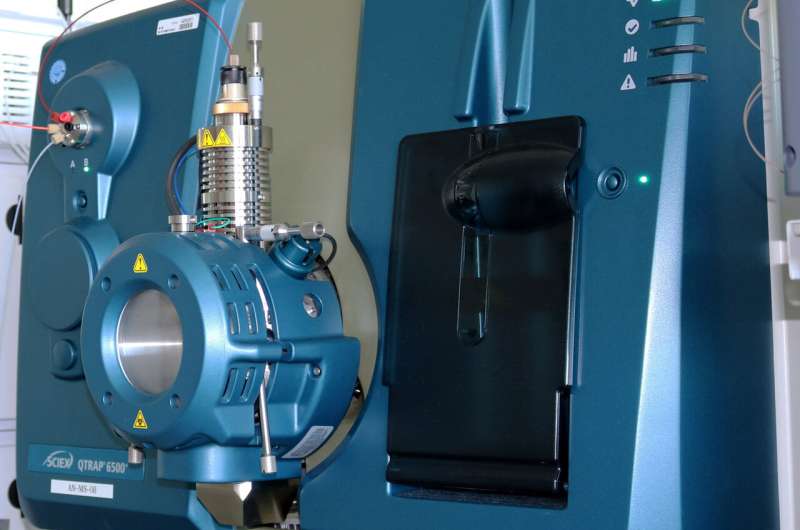The eyes are the window to the nervous system

Individuals who experience an unpleasant tingling in their hands or feet or who suffer from painful discomfort and numbness could be affected by a neuropathy—a disorder of the nervous system in which the nerve fibers become damaged and may begin to degenerate. This effect is already visible on the cornea before the first symptoms appear. Through cornea and tear fluid examinations, a team of researchers at the Fraunhofer Institute for Molecular Biology and Applied Ecology IME, in cooperation with Friedrich-Alexander- Universität Erlangen-Nürnberg (FAU), is establishing a method that enables early determination of how much damage the nerves have already sustained.
Neuropathic pain is caused by damage or disease affecting the nervous system. Patients frequently complain of a furry sensation or numbness in the peripheral regions of the body. However, other possible symptoms include somatosensory disorders, formication, burning pain, loss of thermal and pain perception, and balance problems. The list of symptoms is long. They first manifest in the toes and fingertips and accompany the degeneration of the nerve fibers. Once the entire foot has been affected, gait disturbances set in. Diabetics are often affected, but the disease also occurs as an after-effect following chemotherapies, dialyses, infections and excessive alcohol consumption, as well as in autoimmune diseases.
Nerve fiber damage still difficult to assess
Treatment effectiveness is severely limited in advanced stages of disease progression. Drugs are most effective when they are taken in an early stage, when the nerve fibers are not yet severely degenerated. This means that early diagnosis is essential. The problem is that we lack descriptive methods of making the manifestation and the severity of the neuropathy assessable. Existing methods are only partially suitable: measuring nerve conduction velocity (NCV) does not permit a clear diagnosis. Slowed impulse transmission may indicate a neuropathy, but other indications are also possible. A punch biopsy, on the other hand, where the doctor removes a skin tissue sample, is very painful for patients, and the skin area may not be representative. There is thus an urgent need for alternatives to the traditional diagnostic procedures. The Fraunhofer IME researchers in Frankfurt have chosen the new and innovative approach of corneal examination: "Nerve fiber density is highest in the cornea. The cornea reflects a representative picture of the peripheral nervous system," says Dr. Marco Sisignano, a scientist at Fraunhofer IME. Parameters such as nerve fiber density and length, as well as the degree of branching, can be measured using corneal confocal microscopy. Severely shortened fibers and minimal branching, for instance, allow conclusions to be drawn regarding impending neuropathic disorders even before patients complain of any discomfort.
Focus on tear fluid
In particular, Dr. Sisignano and his team examine tear fluid. They do this work in cooperation with Prof. Elke Lütjen-Drecoll, a renowned glaucoma researcher and specialist in eye physiology at Friedrich-Alexander-Universität Erlangen-Nürnberg. She is investigating whether immune cells in the lacrimal gland detach and flow into the tear film.
"The cornea has no blood supply, but it is surrounded by tear fluid. Therefore, if nerve fiber degeneration is detected, then there must be something in the tear fluid that causes the shortening. That's why we are focusing on the tear film; we collect it from patients using paper strips or capillary tubes and place it in a sample container for further analyses," explains Sisignano.
Tandem mass spectrometry is then used to separate various substances in the fluid and determine their concentration. The team particularly analyzes lipids. Elevated lipid levels in combination with degenerated nerve fibers are indicators of an incipient neurological disorder. "Our USP is lipid analysis. The lipids can essentially function as biomarkers," the biologist explains. The IME researchers have broken new ground with their novel measuring method. "Measuring the lipids in tear fluid is a challenge. After all, we obtain only a small drop from patients." The mass spectrometry had to be adjusted and optimized accordingly.
The project partners are currently conducting tests with 250 patients who suffer from a wide array of neuropathies. Upon completion of the individual examination modules—which include creating sensory profiles, performing corneal microscopy, testing tear samples and measuring lipids—the results will be pooled for analysis and correlation. They hope to be able to derive potential biomarkers for the incidence and severity of the neuropathy for the various patient groups. "Ultimately, we want to give doctors a tool to decide when and whether to initiate treatment," says Sisignano.



















